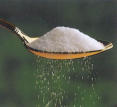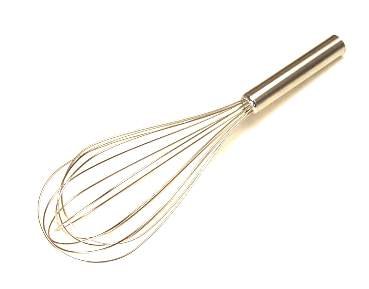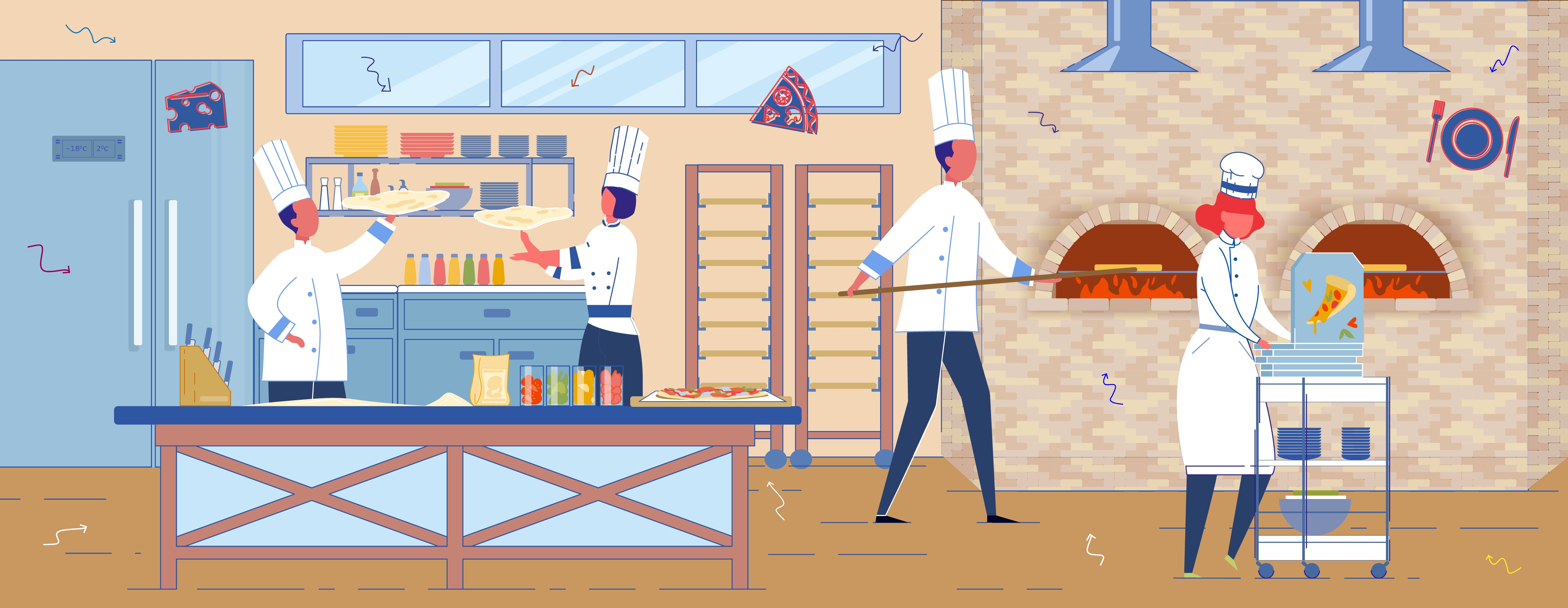Definitions A to Z
To beat: To thoroughly combine ingredients and incorporate air with a rapid, circular motion. This may be done with a wooden spoon, wire whisk, rotary eggbeater, electric mixer or food processor.

To bind: To add a liquid ingredient to a dry mixture to hold it together.
To blend: To process food in an electric blender or mixer.
To boil: To cook a liquid at a temperature of at least 100°C.
To brown: To cook food until it has a brown-coloured appearance, this is usually achieved by grilling, frying or baking.
To bruise: To apply pressure to an ingredient to help release its flavour, eg peel the lemon grass and pound it with the end of a wooden spoon or with a rolling pin to bruise it and add it to the frying pan.
To brush: To cover food with an even layer of liquid by applying it with a pastry brush, eg brush the pastry with beaten egg or milk to glaze.
To chop: To cut food into small even-sized pieces using a knife or food processor.

To coat: To cover something with a layer of something else.
To core: To remove the core or center of something.
To cream: To mix fats and sugar together until creamy in appearance.
To crush: To break into uneven pieces.
To dice: To cut small uniform cubes of any solid ingredient eg cheese or carrots, first cut the food into even-sized thick strips and then slice crosswise into cubes.
To dissolve: To mix dry ingredient(s) with liquid until in solution.
To divide: To separate into parts or portions.
To drain: To remove water from ingredients cooked in liquid or from raw ingredients that have been washed in water by placing them in a sieve or colander.

To drizzle: To pour a liquid over other ingredients, usually in a random design and often as a finishing decorative touch.
To dust: To sprinkle lightly with a powder i.e. icing sugar.
To flake : To break cooked fish into individual pieces.
To fold: A method of gently mixing ingredients. Usually egg whites or whipped cream are folded into a heavier mixture, for a souffle, cake, or pie filling. The lighter mixture is placed on top of the heavier mixture, then the two are combined by passing a spatula down through the mixture, across the bottom, and up over the top. This process continues until the mixtures are combined. This traps air into bubbles in the product, allowing baked goods to rise.

To garnish: To add a small decoration, often edible, to a savoury dish just before serving to enhance its finished appearance.
To glaze: A glaze is used to give desserts a smooth and/or shiny finish.
To grate: To rub food downwards on a grater to produce shreds or slices of varying thicknesses.
To grease: to apply a layer of fat to a surface to prevent food from sticking, e.g. grease the baking tray with butter.
To grill - To cook by direct radiant heat.
To knead: To work a dough by hand, using a folding-back and pressing-forward motion. (Not to be confused with need - knead vs need.)
To line: To place a layer of clingfilm, foil, greaseproof paper or baking parchment, often lightly greased, in a baking tin or on a tray to prevent food from sticking to the surface.
Marbling: Marbled meat is meat (especially red meat) that contains various amounts of intramuscular fat, giving it a marbled pattern.
To mash: To break down a cooked ingredient such as potatoes into a smooth mixture using a potato masher or fork.

To melt: Use a high temperature to turn a solid fat into a liquid.
To mince: To cut into very fine, even pieces using a sharp knife, a food processor or a mincer.
To mix: To beat or stir food ingredients together until they are combined.
To moisten: To make something slightly wet.
To pat: To lightly tap or slap something with the hands.
To peel: To remove the outer layer of a food.
To pour: To transfer a liquid from one container to another.
To prick : To make a single small hole or several small holes, often with a fork, eg to bake blind, first prick the pastry base with a fork.

To purée: To press raw or cooked food through a fine sieve or blend in a food processor or liquidiser to produce a smooth mixture.
To reduce: To boil a liquid in an uncovered pan until it thickens. Reducing concentrates the flavour of the liquid. We say the liquid has been reduced.
To rinse: To clean under running water.
To roast: To cook in the oven, usually with the addition of fat or oil.
To roll out: To reduce the thickness of pastry or dough by applying equal pressure with a rolling pin.
To rub in: A method of incorporating fat into flour by rubbing the fat with the fingertips until it combines with the flour to form a mixture with a breadcrumb-like consistency, eg rub the butter into the flour and add enough cold water to form a smooth dough. Pastry, scones, cakes and biscuits are made using the rub in method.
To saute: To fry quickly in a small amount of hot fat.
To scoop: A scoop is a hand held tool with a small semi-circular bowl at one end used to scoop portions of foods such as ice cream, sorbet, mashed potato or rice.
To season: To add salt, pepper and/or herbs to a food or dish to enhance its flavour.
To separate: To divide an egg into its two distinct components - the egg yolk and the egg white.
To sift: To put dry ingredients such as flour or sugar through a sifter or mesh screen to loosen particles and incorporate air.
To simmer: To keep a liquid just below boiling point, usually in a pan on the hob, e.g. simmer the sauce until it starts to thicken.
To skim: To remove a layer of scum or fat from the surface of a food.
To slice: To cut something into even-sized thin pieces using a sharp knife or food processor.
To soak: To immerse a solid in a liquid.
To spread: To apply on a surface in an even layer.
To sprinkle: To scatter a powdered ingredient or tiny droplets of a liquid, eg sprinkle the caster sugar over the fruit or sprinkle the brandy over the fruit cake.

To steam: To cook food in the steam rising from boiling water.
To stir: To agitate an ingredient or a number of ingredients using a hand held tool such as a spoon.
To strain: To pass wet ingredients through a sieve to remove lumps or pieces of food, eg strain the stock to remove any small pieces of meat or flavourings.
To toast: In this case you place the oatmeal in a hot frying pan (no oil or fat) and stir until they are a nutty brown.
To toss: To lightly mix eg toss the salad in the dressing until well coated. To turn quickly eg toss the pancakes. To cover food completely in another ingredient, eg toss the liver in seasoned flour.
To trim: To remove the edges from something or cut it down to a certain size.
To whip: To beat rapidly using a fork, hand or electric whisk to introduce air into a mixture or single ingredient to increase the volume.
To whisk: To beat a mixture vigorously with a whisk.

To wrap - To encase one food in another. For example: "Wrap the bacon strips around the chicken breasts."
Other terms that crop up in the recipes
Beaten: Ingredients or an ingredient that has been agitated vigorously using a spoon, whisk, electric mixer or fork
Caster / Castor sugar: This is the British term for a refined sugar with small grains ( between granulated and icing sugar). It is known as ‘superfine’ sugar in America.
Hard crack stage: A term used in connection with making sweets to determine the temperature of a sugar and water syrup.
tbsp: Tablespoon (approx 15 ml)
Zest: Sometimes known as peel or rind, the coloured outer layer of citrus rind eg lemon, orange or lime, that contains the essential oil that gives the fruit its distinctive flavour. A small amount of zest gives a strong characteristic flavour of the fruit..

